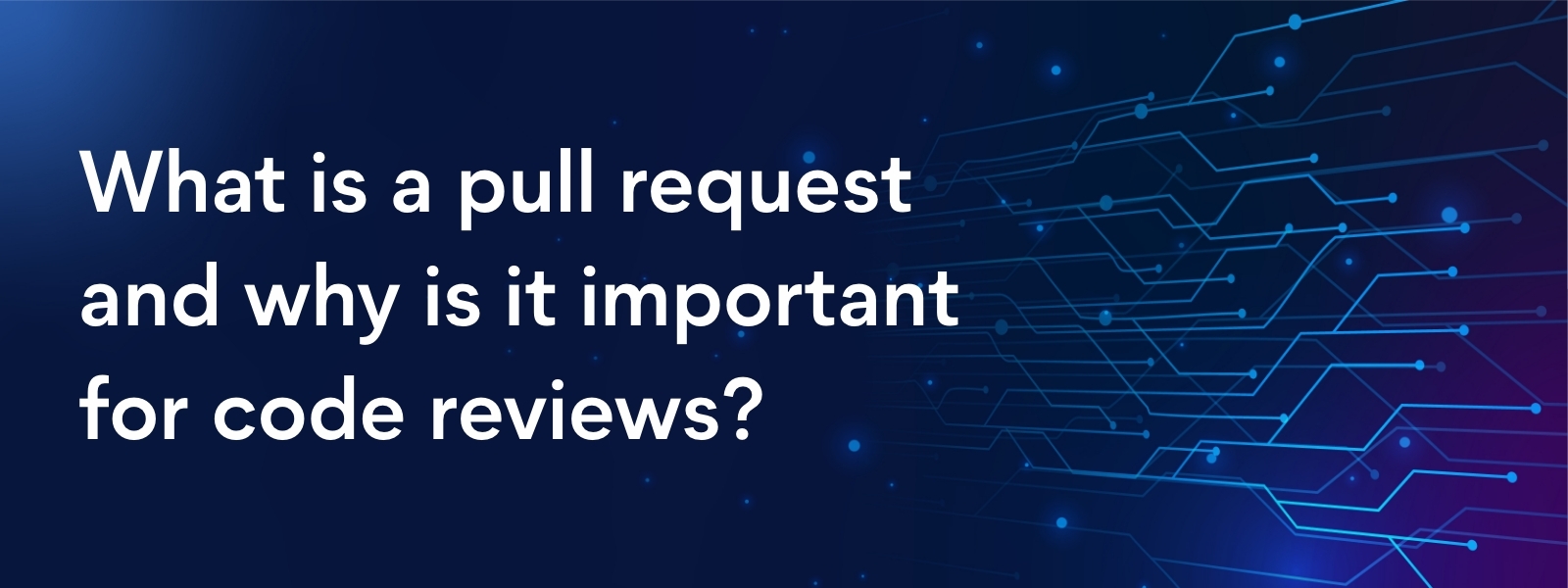Working collaboratively on a project means multiple people have different ideas and opinions. While working on an open source code with multiple people, imagine what happens if everyone starts updating the code haphazardly whenever they want to; that would be chaotic for the result.
This is where pull requests can help your team.
What is a pull request?
A pull request, also called a merge request, is a fundamental feature in version control systems like Git that enables developers to suggest changes to a codebase, repository, or software development project. The pull request button serves as a distinct platform for discussing and reviewing code changes and discussing the new feature. It enables keeping updates separate from the main project, promoting internal collaboration and potentially external involvement, and streamlining the debugging process.

Why is a pull request necessary?
A merge pull request helps developers work collaboratively. Here are five reasons it is necessary.
They bring efficiency into the process:
Pull requests allow developers to suggest changes and share them with the rest of the team. At the same time, it also helps them grow by getting feedback and suggestions about the fork or branch. They make space for efficient code reviews and then add the changes to the codebase in a controlled manner.
Enables collaboration:
Pull requests are a great way to encourage valuable communication and feedback between reviewers and contributors. With this platform, reviewers can leave comments directly on specific lines of code, allowing space to address concerns, ask questions, and make suggestions for improvements. This collaborative approach promotes peer review, and knowledge sharing and helps team members to develop a shared understanding, resulting in superior solutions. It also helps handle conflict resolution well within a team.
Tracks the build process:
Pull requests play a crucial role in helping the engineering manager track the entire software build process. They serve as a central hub where developers propose changes, enabling the manager to review, provide feedback, and monitor progress. Through pull requests, the manager gains visibility into code modifications, discussions, and collaboration among team members. This allows for effective code review, quality control, and ensuring alignment with project objectives. Furthermore, pull requests often integrate with project management and continuous integration systems, providing a comprehensive view of the software build process and facilitating streamlined coordination and oversight by the engineering manager.
Code quality assurance:
Pull requests play a vital role in ensuring code quality by acting as a gatekeeper. It facilitates a structured and collaborative process for code review, automated testing, and adhering to coding standards. Hence, ensuring that the proposed changes are aligned with the project standards, maintain code quality, and adhere to best practices.
Draft pull request:
Draft pull request offers a critical mechanism for incremental development. Developers can work on code changes incrementally before finalizing them for integration into the main codebase. It allows for continuous feedback and developers can request review from their peers before the code is said to be complete. Hence, enhancing the software development process’ flexibility and the code aligns with the project goals and standards.
Challenges of managing pull request
Managing pull requests is one of the most challenging and time-consuming parts of the software development process. A few of them include:
Branching complexity:
Managing branching for each pull request may become complicated when larger projects with multiple features or bug fixes are developed concurrently. It may also happen that change in one branch leads to change in another. Therefore, the interdependency can lead to a complex branching structure.
Solution:
The engineering team must ensure that the branches are properly named, isolated, and updated with the latest changes from the main codebase.
A high number of PR:
Managing a large number of pull requests is time-consuming. Especially, when the pull requests are many and very few developers to review them. This further increases the frequency of merges into the main branch which can disrupt the development workflow.
Solution:
The engineering team must set a daily limit on how many PRs they can open in a day. Besides this, automated testing, continuous integration, and code formatting tools can also help streamline the process and make it easier for developers.
Merge conflicts:
During peer review, merge conflicts are a common challenge among developers. It may happen that the two developers have made changes to the same line of code. This further results in conflict as the version controller isn’t sure which one to keep and which one to discard.
Solution:
One of the best ways to improve team communication and using project management tools to keep track of the changes. Define areas of the codebase clearly and assign code ownership to specific team members.
Components of a pull request
When making a pull request, ensure you make it as easy as possible for the reviewer to approve or provide feedback. To do this well, here are the components of a good pull request:
- Summary of changes made
- Description of why the changes were made
- List of files changed
- A list of changes that were made in the pull request
- If applicable, include what kind of environments this should be tested on
- Link the web pages where this issue could possibly be used to make a change
- Test the proposed changes well in multiple scenarios and create test scripts for the reviewer
- Any relevant screenshots or other media
- Reference to any related issues or pull requests

Process of creating a pull request
Here are the steps to create a pull request:
- The developer creates a branch or a fork of the main project repository
- The developer then makes the changes to this cloned code to create new features or fix an issue or make a codebase more efficient
- This branch is pushed to the remote repository, and then a pull request is made
- The reviewer is notified of the new changes and then provides feedback or approves the change
- Once the change is approved, it is merged into the project repository
Process of reviewing a pull request
Once a pull request is made, fellow developers can review the alterations and offer their thoughts. Their feedback can be given through comments on the pull request, proposing modifications, or giving the green light to the changes as they are. The purpose of the review stage is to guarantee that the changes are of top-notch quality, adhere to the project’s criteria, and align with the project’s objectives.
If there are any changes required to be made, the developer is alerted for updating process. If not, a merging process takes place where the changes are added to the codebase.
Best practices for using pull requests
Some best practices for using pull requests include:
- Creating small, focused pull requests that address one issue or feature at a time
- Providing clear explanations and context for the changes made
- Responding promptly to feedback and comments
- Ensuring that all automated tests pass before creating a pull request
- Using a code review checklist to ensure that changes meet project standards and guidelines
Why PR is important for code reviews?
The code review process significantly contributes to extended cycle times, particularly in terms of pull request pickup time, pull request review time, and pull request size. Understanding the importance of measurement for improvement, we have developed a platform that aggregates your issues, Git, and release data into one centralized location. However, we firmly believe that metrics alone are not sufficient for enhancing development teams.
While it is valuable to know your cycle time and break it down into coding time, PR pickup time, PR review time, and deploy time, it is equally important to assess whether your average times are considered favorable or unfavorable.

At Typo, we strive to provide not only the data and metrics but also the context and insights needed to gauge the effectiveness of your team’s performance. By combining quantitative metrics with qualitative analysis, our platform empowers you to make informed decisions and drive meaningful improvements in your development processes.
We understand that achieving optimal performance requires a holistic approach, and we are committed to supporting your team’s success.





